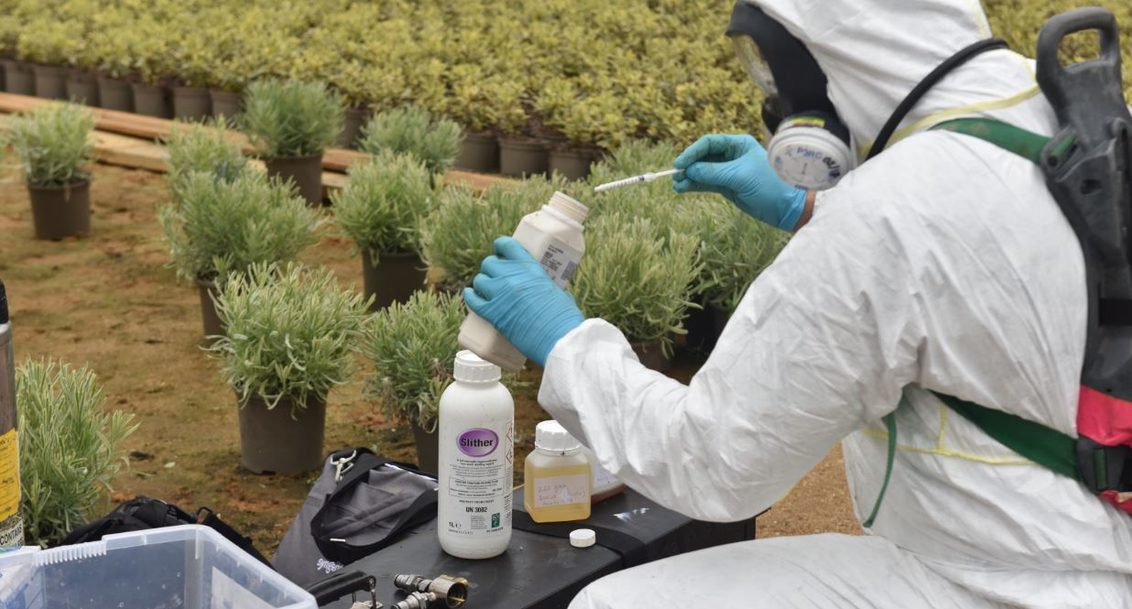The Art of Application: Droplets? Tick. What next?
Welcome to the next blog in our Art of Application Series. You may recall in our last blog that we spoke about the types of droplet sizes and their relation to nozzles and pressure. While these are solid foundations, it’s time to go a level up, how can you ensure spray penetration through even the most difficult of crops?

To start:
Once the spray has left the nozzle there are just three places it can go:
- On the target crop
- On the ground (miss or run-off)
- Into the air (drift)
The challenge when trying to penetrate a dense canopy like Gaultheria procumbens is that the line between penetrating the canopy and running off the leaf is very fine one.
What’s the spray objective?
Again going over old (but important ground), it’s important to think about what you are hoping to achieve with each spray. For example, when thinking about droplet size for our sprayer set-up, knowing that the objective is to maximise canopy penetration and deposition whilst minimising run-off it is clear. But we should also be avoiding fine droplets and that’s when the choices then get a little tricky. Medium spray quality can keep run-off to a minimum but reduce penetration where as a very coarse droplet will penetrate but increase the amount of run-off.

But coarser droplets do have benefits
As our table shows, coarser droplets give us two key options when thinking about your objectives:
- Reduced drift
- Better penetration
However they do introduce a higher risk of “bounce off”
I often see operators increasing the pressure to “force” the spray into the canopy which can often have the opposite effect, in rough terms, it literally “bounces” straight off the crop. Higher pressure will lead to finer droplets… But they cannot be forced and they only reach the outer leaves, or worse still, hang around in the atmosphere increasing the operator’s exposure. And let’s be honest, do you really want to watch your hard earned money bounce off the crop having done no good whatsoever?
Higher water volumes are great but can lead to increased run-off
Optimum coverage comes by using a coarse droplet at the nozzles’ optimum pressure (usually 2-3 bar). Forward speed can then be adjusted to ensure water volume is correct – we usually find even the densest canopy’s can be well penetrated with water volumes of up to 750L/Ha. Once we get higher than that, significant losses come in the shape of run-off.
Proper preparation prevents…
Setting up your sprayer to ensure spray penetration is optimum is the first step, but importantly you can optimise this by using an adjuvant. The right adjuvant can have a really positive impact on the amount of product deposition on the leaf. They can minimise run-off which in turn helps you get more from the product and also improve losses to the environment.
Great. But what adjuvant to use?
This is why adjuvants are so adj-vantagous. There are many different types, all giving you choice, depending on your spray objective. The most common ones out there can solve many issues:
- Stickers – literally helping you “stick” the product to the leaf
- Spreaders – the opposite, ensuring the product spreads evenly across the leaf
- Spreader / Stickers – the happy equilibrium to make sure the product performs “just right”
- Drift reduction – reduce operator exposure, ensure you don’t spray something you shouldn’t
- Uptake enhancer – makes it easier for the plant to draw up the crop protection product
With so many options, any one of these can have a positive impact when used in the right way for the correct purpose. However, using the wrong one at the wrong rate will of course have a negative impact.
This leads us nicely into the next blog, watch this space for our thoughts on good adjuvant practice.
Facebook: Syngenta Ornamentals UK
Instagram: syngenta_ornamentals
Twitter: @SyngentaOCUK
YouTube: Syngenta Ornamentals UK
